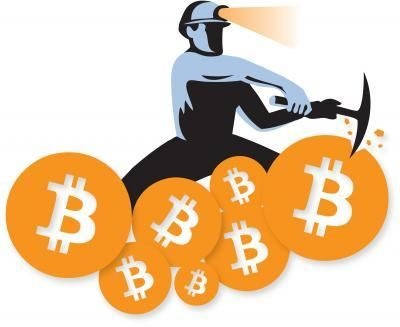If you've ever wondered where Bitcoin comes from and how it goes into circulation, the answer is that it gets "mined" into existence. Bitcoin mining serves to both add transactions to the block chain and to release new Bitcoin. The mining process involves compiling recent transactions into blocks and trying to solve a computationally difficult puzzle. The first participant who solves the puzzle gets to place the next block on the block chain and claim the rewards. The rewards incentivize mining and include both the transaction fees (paid to the miner in the form of Bitcoin) as well as the newly released Bitcoin.
Security of the Network:
Bitcoin mining is decentralized. Anyone with an internet connection and the proper hardware can participate. The security of the Bitcoin network depends on this decentralization since the Bitcoin network makes decisions based on consensus. If there is disagreement about whether a block should be included in the block chain, the decision is effectively made by a simple majority consensus, that is, if greater than half of the mining power agrees.
If an individual person or organization has control of greater than half of the Bitcoin network's mining power, then they have the power to corrupt the block chain. The concept of someone controlling more than half of the mining power and using it to corrupt the block chain is known as a "51% attack". How costly such an attack would be to carry out depends largely on how much mining power is involved in the Bitcoin network. Thus the security of the Bitcoin network depends in part on how much mining power is employed.
The amount of mining power that gets used in the network depends directly on the incentives miners have, that is, the block reward and transaction fees.
Block Reward:
The amount of new bitcoin released with each mined block is called the block reward. The block reward is halved every 210,000 blocks, or roughly every four years. The block reward started at 50 bitcoin in 2009, and is now 25 bitcoin in 2014. This diminishing block reward will result in a total release of bitcoin that approaches 21 million. According to current Bitcoin protocol, 21 million is the cap and no more will be mined after that number has been attained.
As of today, block rewards provide the vast majority of the incentive for miners. At the time of writing, for the previous 24 hours, transaction fees represented 0.3% of mining revenue.
Transaction Fees:
As the block reward diminishes over time, eventually approaching zero, the miners will be less incentivized to mine bitcoin for the block reward. This could be a major security problem for Bitcoin, unless the incentives provided by the block reward are replaced by transaction fees.
Transaction fees are some amount of Bitcoin that are included in a transaction as a reward for the miner who mines the block in which the transaction is included. Transaction fees are voluntary on the part of the person sending a transaction. Whether or not a transaction is included in a block by a miner is also voluntary. Thus, users sending transactions can use transaction fees to incentive miners to verify their transactions. The version of the Bitcoin client released by the core development team, which can be used to send transactions, has fee minimum rules by default.
Mining Difficulty:
How hard is it to mine Bitcoins? Well, that depends on how much effort is being put into mining across the network. Following the protocol laid out in the software, the Bitcoin network automatically adjusts the difficulty of the mining every 2016 blocks, or roughly every two weeks. It adjusts itself with the aim of keeping the rate of block discovery constant. Thus if more computational power is employed in mining, then the difficulty will adjust upwards to make mining harder. And if computational power is taken off of the network, the opposite happens. The difficulty adjusts downward to make mining easier.
The higher the difficulty level, the less profitable mining is for miners. Thus, the more people mining, the less profitable mining is for each participant. The total payout depends on the price of Bitcoin, the block reward, and the size of the transaction fees, but the more people mining, the smaller the slice of that pie each person gets.
Mining Hardware:
Anyone with access to the internet and suitable hardware can participate in mining. In the earliest days of Bitcoin, mining was done with CPUs from normal desktop computers. Graphics cards, or graphics processing units (GPUs), are more effective at mining than CPUs and as Bitcoin gained popularity, GPUs became dominant. Eventually, hardware known as an ASIC (which stands for Application-Specific Integrated Circuit) was designed specifically for mining Bitcoin. The first ones were released in 2013 and have been improved upon since, with more efficient designs coming to market. Today, mining is so competitive, it can only be done profitably with the latest ASICs. When using CPUs, GPUs, or even the older ASICs, the cost of energy consumption is greater than the revenue generated.
As ASICs are advanced and more participants enter the mining space, the difficulty has shot up exponentially. A lot of this activity has been incentivized by the large price increase Bitcoin experienced in 2013 and speculation that the price may rise further. There is also political power within the Bitcoin ecosystem that comes with controlling mining power, since that mining power essentially gives you a vote in whether to accept changes to the protocol.




